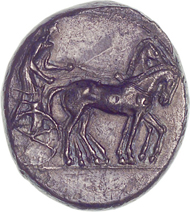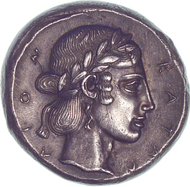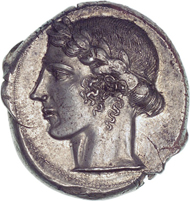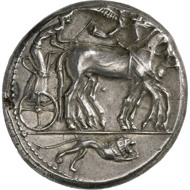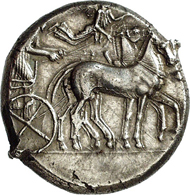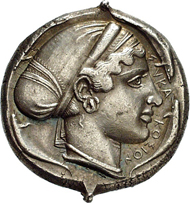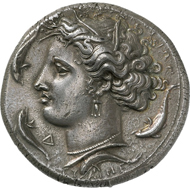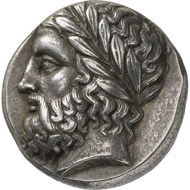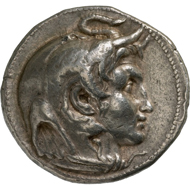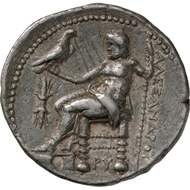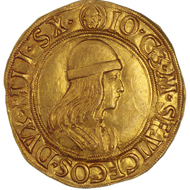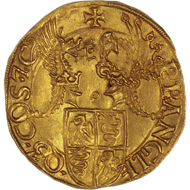April 11, 2013 – The MoneyMuseum has a new project. It will be presenting a series of both short and more comprehensive podcasts on iTunes University on the topics of coins, money, economic history, economics and banks and stock markets. Of course, these podcasts will also touch on themes like alternatives to the current prevailing monetary system and the future of money. The past will also figure prominently: Podcasts featuring numismatic content will also regularly be available for download.
In order to realize this mammoth project, Dr. Jürg Conzett, founder of the Sunflower Foundation and director of the MoneyMuseum, has decided to auction off a tiny but valuable portion of the museum’s own collection. The pieces consist of the finest quality Greek coins, for the most part, whose selection is owing not just to the collector, Jürg Conzett, but also most notably to Leo Mildenberg. The widely known numismatist and coin dealer oversaw the coin collection of the MoneyMuseum until his death in 2001.
With his trained eye, Mildenberg procured outstanding pieces for the MoneyMuseum – with respect to style and condition. As a result, some examples from the collection include what may be considered the finest known specimens, …
Katane (Sicily). Tetradrachm. From Bank Leu auction 71 (1997), 50.
… as is the case with the tetradrachm from Catane, purchased at Bank Leu 71 (1997), No. 50.
Leontini (Sicily). Tetradrachm. From Triton auction I (1997), 257.
The same is true for a fine tetradrachm from Leontini, acquired in the same year at the first auction of the then newly founded company Triton, in New York.
The true highlight of the coins that will be offered for sale, however, are three coins from Syracuse:
Syracuse (Sicily). Tetradrachm of the Demareteion series. From Bank Leu auction 76 (1999), 54.
1. A tetradrachm of the Demareteion series, extremely fine, wonderfully struck and centered;
Syracuse (Sicily). Tetradrachm. From NAC auction 13 (1998), 447.
2. A dekadrachm of exquisite beauty signed by Euainetos, whose avers displays none of the usual traces of rust from the die; and …
Syracuse (Sicily). Dekadrachm, signed by Euainetos. From Naville-Ars Classica auction 13 (1928), 342 and NAC 13 (1998), 481.
… 3. A tetradrachm featuring the rare design of Arethusa, the hair gathered under a folded hood. The Museum of Ancient Art Basel’s 1988 catalogue, page 128, offers the following about this type of coin: ‘The monumental, serious head is unique among the array of early classical Arethusa heads. Its master – who, apart from this piece, is undetectable in Syracuse – combines increased physicality, expressed here in the folds of the hood, with a new sense of spatial positioning.’
Elis. Stater. From the Lambros collections; Sir H. Weber and Jameson. From Sotheby auction (December 1998), 24.
Also of outstanding beauty is the Zeus head on the stater of Elis, purchased at Sotheby’s in 1998. It has featured in both the Lambros collection as well as that of Sir H. Weber and R. Jameson. From the Trampitsch collections comes a stater of the Parisii. It is among the most splendid representatives of these early precursors of abstract art.
Ptolemy I (Egypt). Tetradrachm. From Bank Leu auction 71 (1997), 243.
These are just some of the examples of the coins that the MoneyMuseum will be selling in order to finance its newest project. International auction house Numismatica Ars Classica will act as partner for the sales. The ancient coins will be coming up for auction on May 16th and 17th, 2013 in Zurich.
Gian Galeazzo Maria Sforza of Milan. Double ducat. From Bank Leu auction 68 (1996), 359.
The Italian coins will be offered in the fall auction.
You can learn more about the auctions online at Numismatica Ars Classica.
If you click here, you will be directly at NAC’s auction preview.
Additional information about the MoneyMuseum as well as the complete collection can be found on the MoneyMuseum website.
Of course we have prepared a special article on the MoneyMuseum.
You can also use or download many of the MoneyMuseum’s products on the Sunflower Foundation / Media site.





